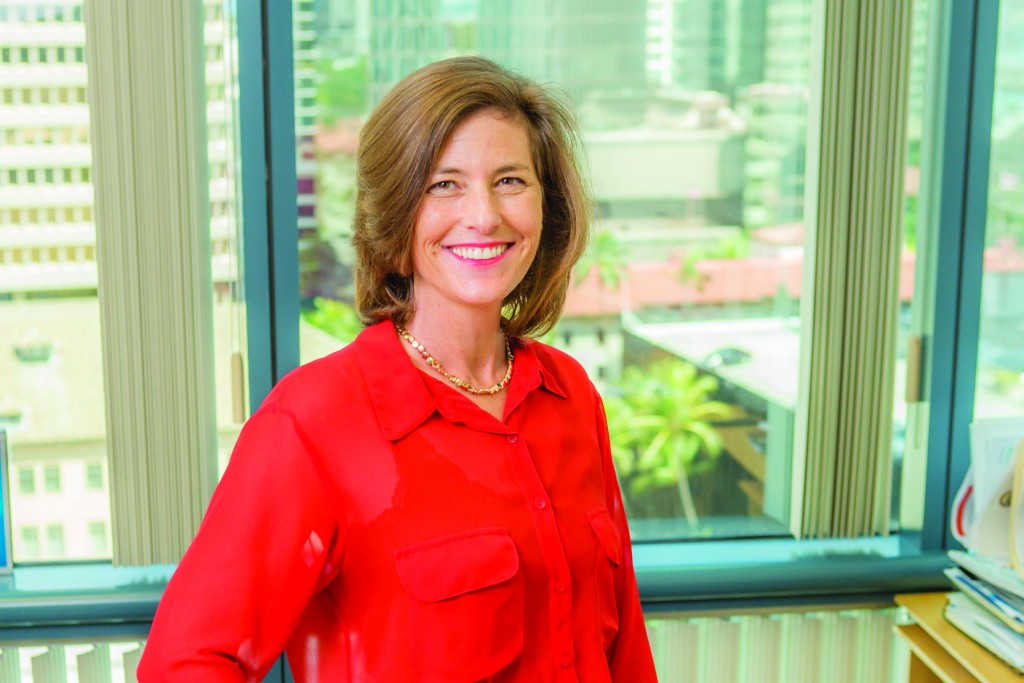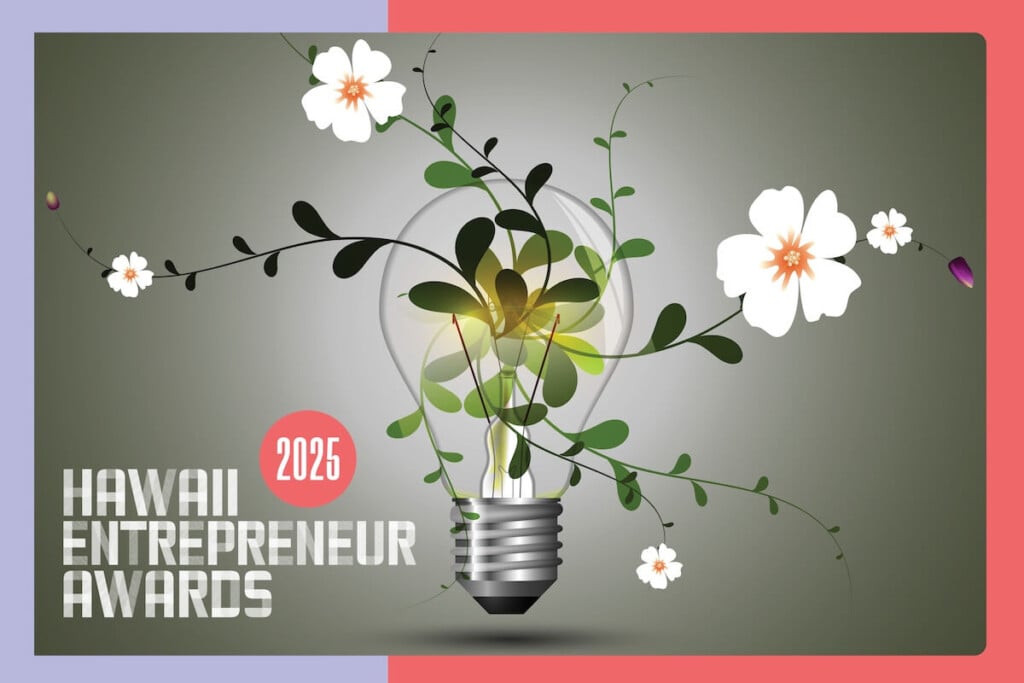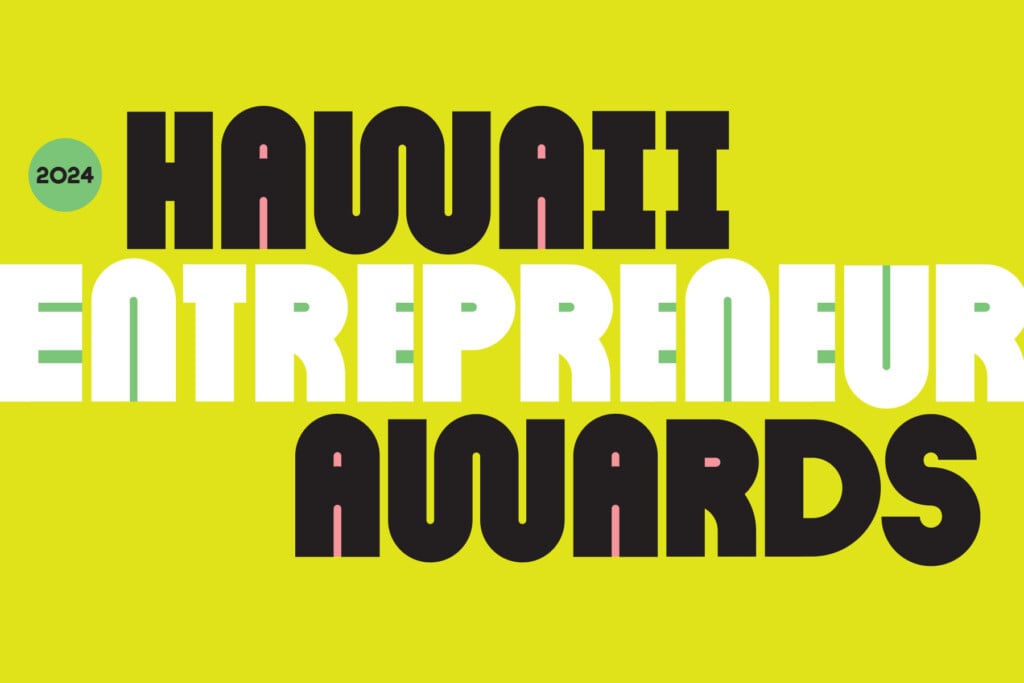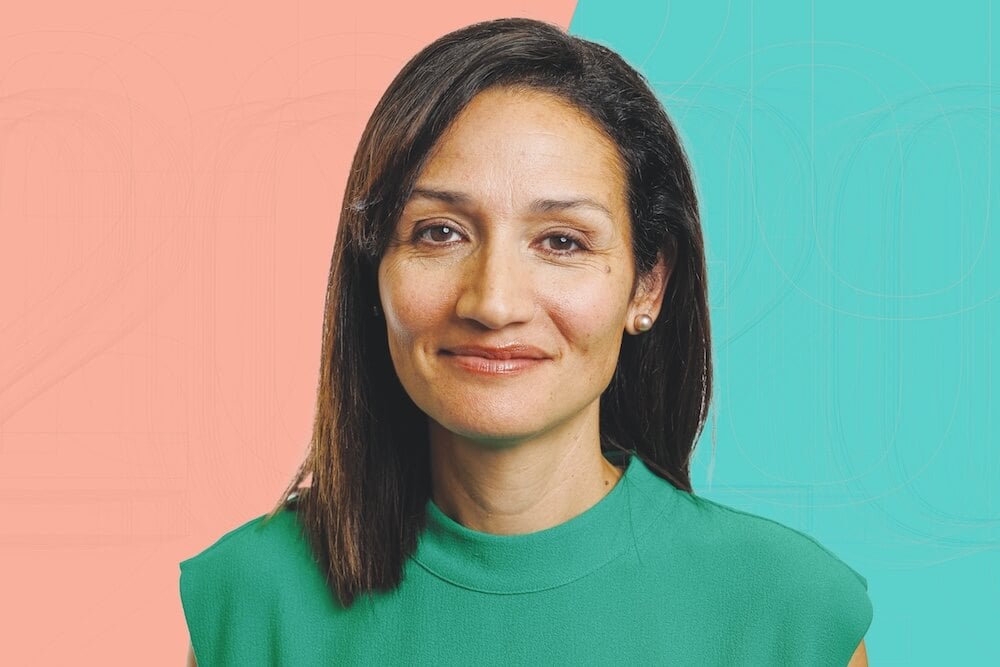Talk Story with Chenoa Farnsworth

Since she helped found the VC firm Kolohala Ventures in 2006, Farnsworth has been a linchpin in the startup community in Hawaii. Now wearing multiple hats, she talks about the institutions and personal sacrifices it takes to build an ecosystem for entrepreneurship.
How has the innovation sector changed in recent years?
Some of it is generational. Today, we have all these grassroots organizations and young energy in the entrepreneurial space. But there was a time, when Rob Robinson and I were both working at Kilohana, and we were asking ourselves, “Where are all the young people that want to get involved in startups?” And there weren’t any. There weren’t even any interns. Now, though, there’s a flood of interest in startups among young people in Hawaii. Young people are beginning to see entrepreneurship as an alternative to, say, working for the state.
Entrepreneurship is taught in schools now. It’s what’s all the rage. And that’s rubbing off on us a little bit in Hawaii, finally. But it’s still not ingrained in our culture. My friend in Colorado says it’s just in the water there. We don’t have that culture here, yet, but I think we’re at least moving away from a culture that’s very risk averse. Entrepreneurship has become acceptable for the 30-and-under crowd, and I don’t think it was before. Even in the Act 221 days, we were working with a very different demographic, with relatively older entrepreneurs and investors.
What does that change look like structurally?
What’s top of mind now is something we call “Startup Paradise.” Startup Paradise is how everybody in the startup community is referring to Hawaii. About two years ago, at the Startup Hawaii Conference – the one Steve Case spoke at – folks started using the hashtag #StartupParadise, and it just stuck. It’s become how we in the community are referring to ourselves. It’s intended to be kind of an open-source umbrella name for Hawaii, much like Silicon Valley, or Silicon Alley, or Silicon Beach.
Nobody owns the logo or the name. We asked ourselves, “Should we have an organization to run this?” But we consciously decided not to. We really want people to feel they can use it in their own way. I want everybody to be using it, and certainly a lot of people are. It includes organizations like mBloom, Hawaii Tech Exchange and Sultan Ventures.
One of the interesting things about the Startup Paradise moniker is that it emphasizes the fun-in-the-sun aspect of Hawaii as a way to attract the components of a startup ecosystem.
I think there’s been a lot of resistance to that. There’s the sense that it’s not very “businessy” in Hawaii, that you’re not going to get a lot of business done here. But the sun and the sea are really what set us apart. They’re so differentiating. You can’t compete with us on them – the appeal of the environment and the lifestyle here. You can compete on everything else, and you’ll probably win, but in those we excel. They’re truly our competitive advantage, and it’s time to embrace them.
If you consider entrepreneurs around the world to be our customers, the No. 1 thing is to attract talent. No. 2 is to attract capital. But, if you have the best and the brightest, the capital will follow. So, I really emphasize the lifestyle issues in Hawaii. It’s about embracing our assets. I gave a presentation at a conference in Madrid, and I showed them (a picture looking toward Diamond Head from Harbor View tower), and said, “This is the view from my office.” They were all like, “Ah!” This has also been part of the process here at Blue Startups. We listened to our customers to learn what coming to Hawaii was all about for them. They really liked the idea of working in Hawaii.
A lot of the ideas behind Startup Paradise and Blue Startups are based on Brad Feld’s book, “Startup Communities: Building an Entrepreneurial Ecosystem in Your City,” which sketches out how Boulder, Colo., became a tech hub. What have you learned from Feld?
Brad says you need four things for this movement to succeed. 1: It must be led by entrepreneurs. You know all the reasons we need to do this, the whole economic diversification of the economy theme. Right now, we rely on the military and tourism, but those sectors have flatlined. The first attempt to change that was Act 221. But, as soon as that was over, the party was over, too. What’s happening now is about the initiative coming from the entrepreneurs themselves, coming from the grassroots. It’s about the community coming together and self-organizing from the bottom up.
2: You have to be in it for the long term. Brad says it takes 20 years to create a startup community. You can’t expect things to change overnight. But that’s often what the government expects. It wants to see numbers – metrics that show it’s getting better – and, if you don’t have those numbers, they cut off your funding. But, for us to succeed, we really have to have a long-term view, which, overall, is why this whole initiative has to be entrepreneur-led.
3: It has to be inclusive of everyone at every level in the ecosystem. That’s why Startup Paradise is viewed as this big umbrella. No one should feel excluded from it, so we include things like the fashion incubator, Make Honolulu, mbloom on Maui, Techworks on the Big Island.
And 4: You need to have regular events to engage people, things like the Pupus & Pitches, WetWare Wednesdays and Demo Day. These are important opportunities to network and make contacts. A good example is something called New Tech Meetups. This is a monthly meeting that’s open to anyone in the local tech scene.
We’ve also revitalized the Hawaii Venture Capital Association (HVCA), which now will continue on as another kind of networking organization. The more of those, the better. There are connections to be made. They can potentially find talent there. There are the resources to make a company what it needs to be. Funders will get together with entrepreneurs. All those kinds of things will happen – by chance or by design – by bringing people together regularly.
Blue Startups, Startup Paradise, HVCA – that’s a lot on your plate. What else are you working on?
We also really want to try to enhance the startup network outside the state, so we’re creating what we call “Startup Five-0,” which would be part of the HVCA. HVCA, right now, is a membership organization and all its members live here. Obviously, Startup Five-0 members won’t be participating in our monthly luncheons. What we want to do is build a network of people outside of Hawaii, people who are affiliated with Hawaii, who are in positions to help our startup companies. It’s modeled after a Canadian organization called C100, which is a nonprofit organization whose job is basically to connect Canadian entrepreneurs with Canadian expats who are in positions to help them. We want to do the same thing. Now, it’s about finding those charter members. It will really be led by somebody in the Bay Area.
What’s the most satisfying part of your work in the startup world?
The most satisfying part is working with the entrepreneurs at Blue Startups. They’re so smart and driven and they have a ton of energy. I just really enjoy the process of digging in with each of them. Before, when I was just on the investor side of the table, it was more analytical. As an investor, you do a lot of due diligence. But, here at Blue Startups, I get to see the entrepreneurs as they pivot, struggle and create. I see everything they go through, and I go through it with them. It’s very satisfying to help a company grow.
Here, I get to be the queen-bee mentor. It’s great. It’s also exhausting. I have two real kids at home and it’s like I have eight more kids here. They come to you with every question and problem.
The people that work for Blue Startups are also working 10 times more than they would at any regular job. Those folks are just as important as I am. Keeping that thing going, keeping them motivated, that’s tricky. Keeping myself motivated is tricky enough. There are a lot of sacrifices being made here.
What about your own sacrifice?
I can only do this because I have a supportive and understanding spouse. My mom is also here and she helps, too. And I try to involve my kids as much as possible. In this last round of applications at Blue Startups, my daughter, who’s 11, helped me review all the applications, because she’s a digital native. That gives a perspective someone from my generation will never have.
But I asked my daughter the other day what she wanted to be when she grew up. She said she wanted to be a primatologist, like Jane Goodall. I said, “Would you like to be an entrepreneur?” And she said, “No, entrepreneurs have to work too hard, like you.” Here I thought I was inspiring my kids, but they see it as the reason I’m not around so much of the time. Entrepreneurism is incredibly time consuming.
Now is the time we’ll either see things shift, or they won’t. There’s a small window of opportunity now to be harvested and directed. My sense of urgency is that this window won’t stay open forever. I’ve made this my life’s mission: to build an entrepreneurial ecosystem, a diversified economy, so my children can stay here and have good opportunities.
This interview has been edited for conciseness and clarity.






